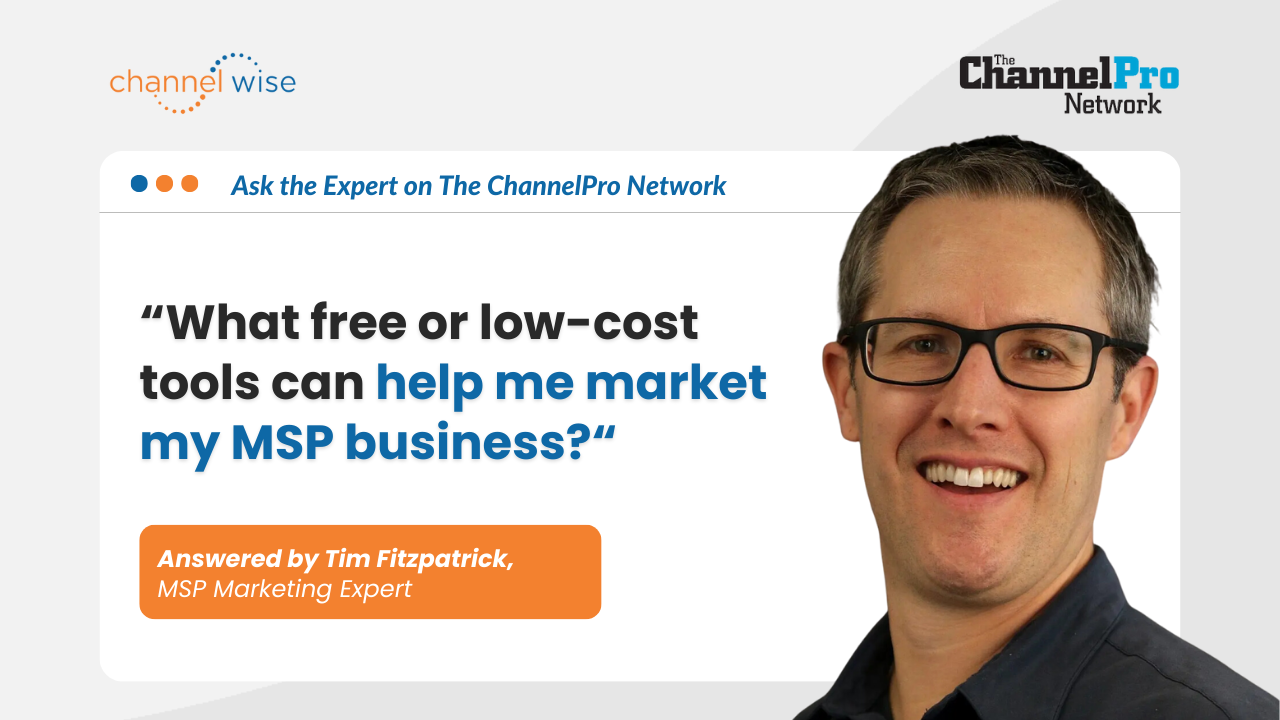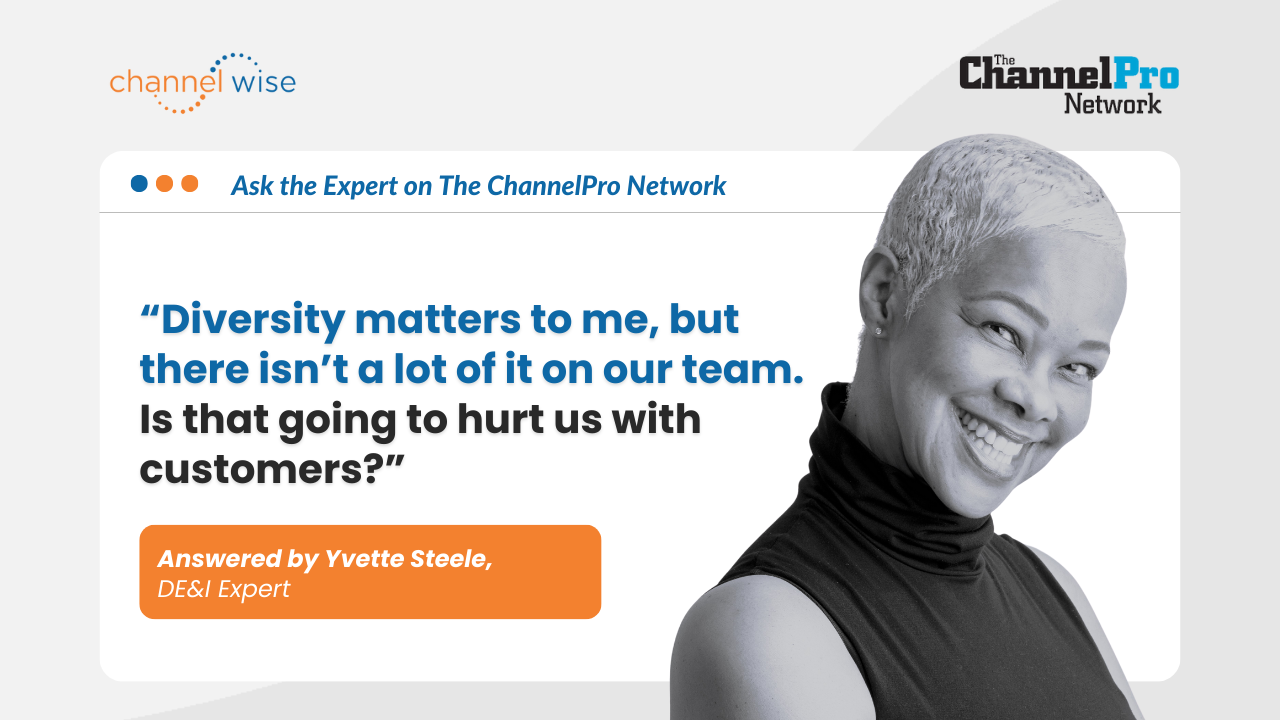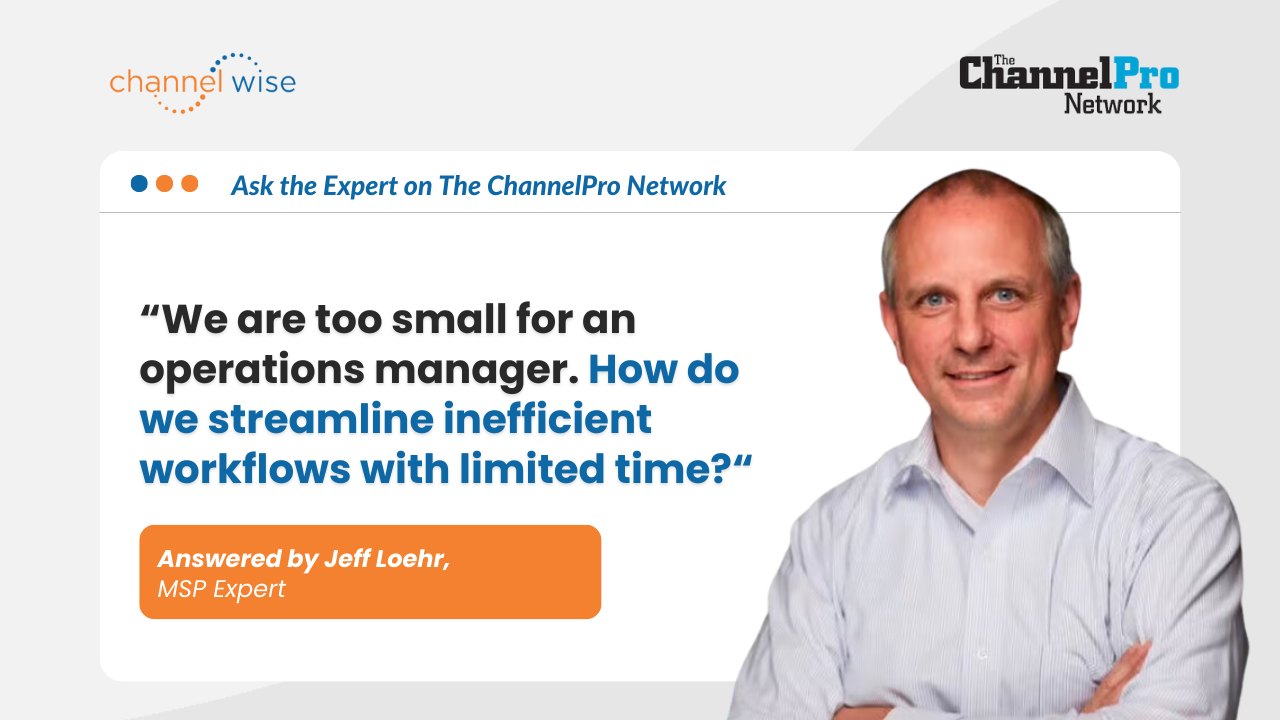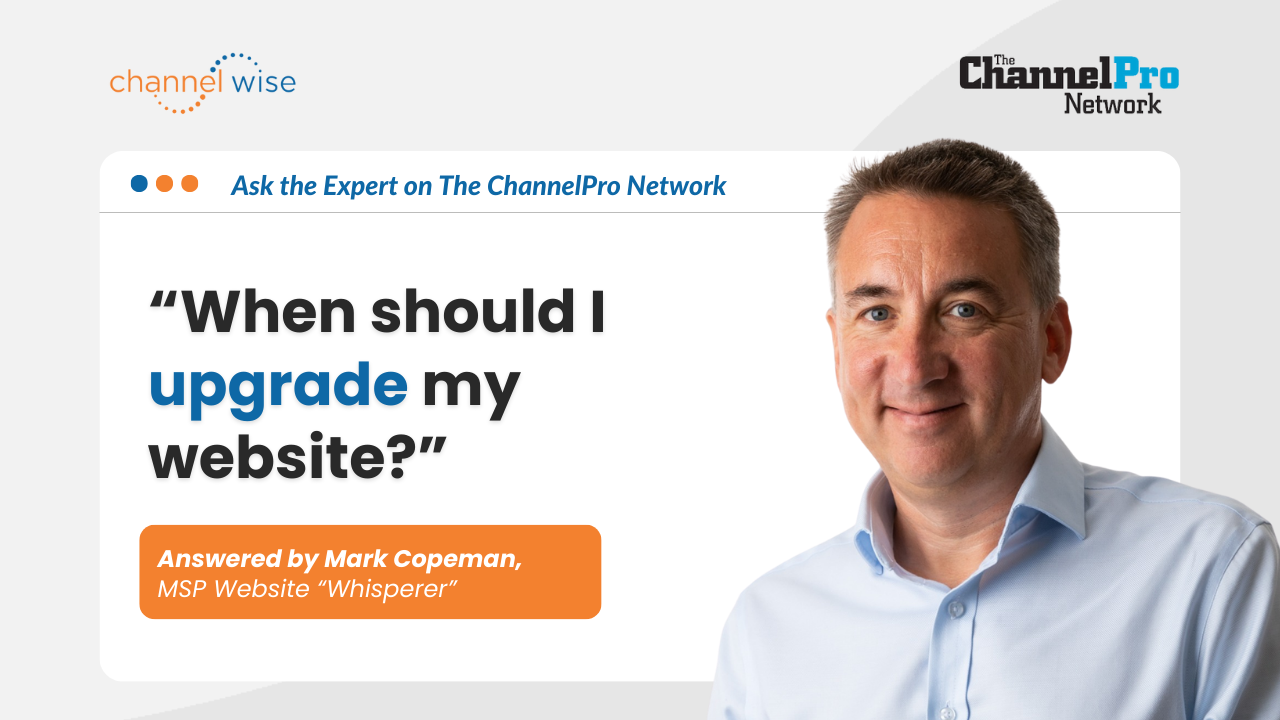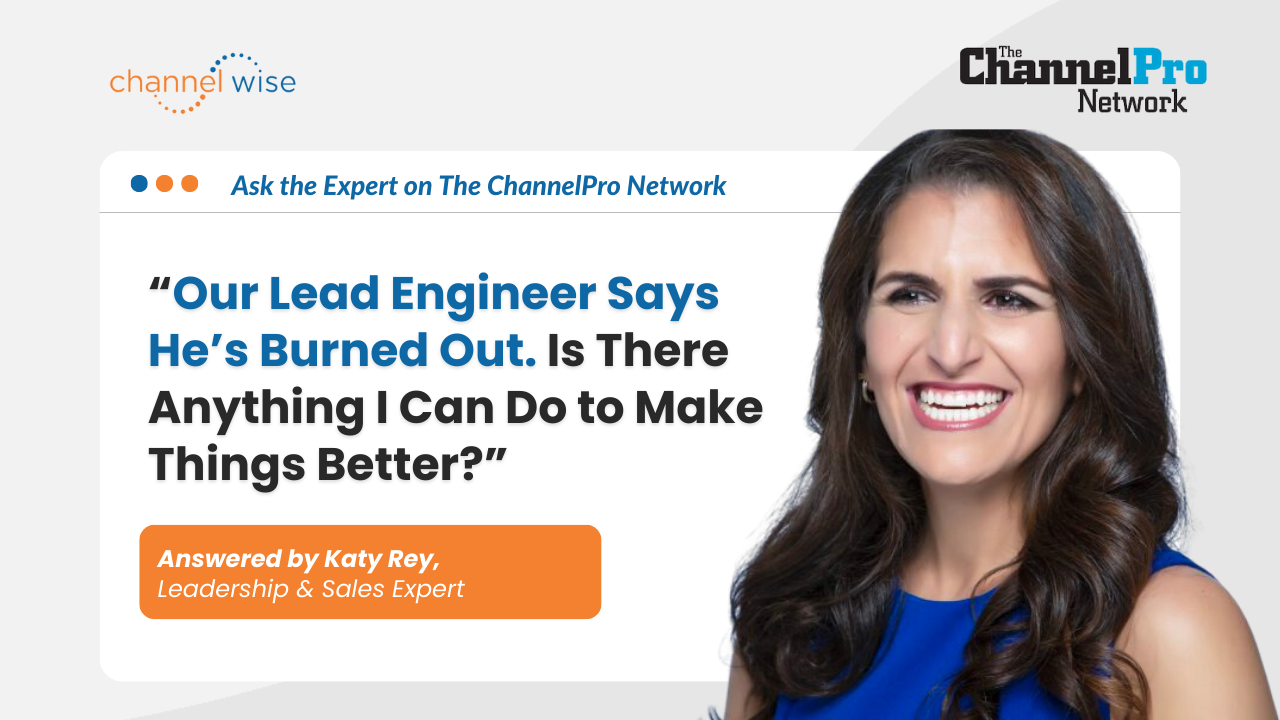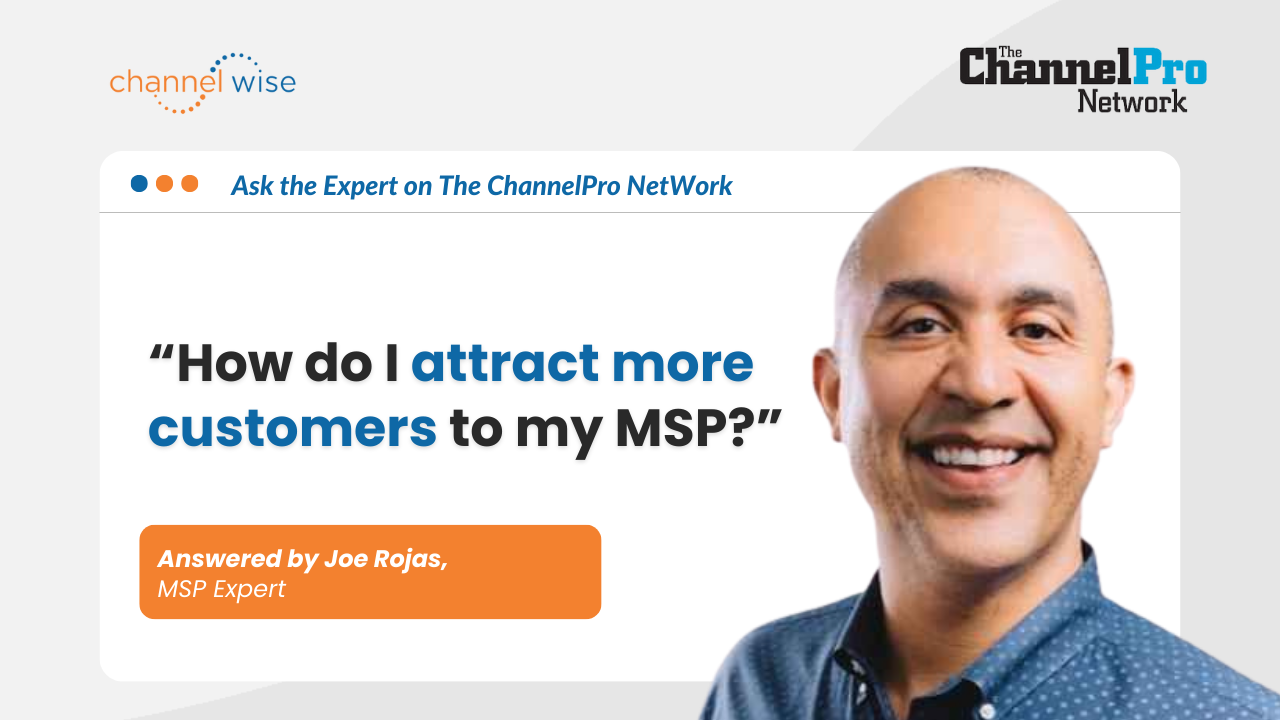Business Reviews for MSPs with Marnie Stockman
Click here to watch the replay:

In the world of managed services, customer relationships are critical to success. To enhance and strengthen these relationships, MSPs must adopt a human-first approach prioritizing customer experience and outcomes.
In this Ask the Expert episode, Kathryn Rose, CEO & Founder of channelwise, interviews Marnie Stockman, a
channelWise expert, and CEO of Lifecycle Insights, on practical steps for MSPs to use Quarterly Business Reviews (QBRs) to improve customer relationships and business outcomes. They discuss topics ranging from identifying the most valuable clients to conducting business reviews and sharing insights on how MSPs can take the first step toward building more meaningful customer relationships.
Highlights:
- A human-first approach is crucial for MSPs to enhance or strengthen customer relationships.
- MSPs can improve their customer experience through process maturity and automation by defining and digitizing their process and then moving on to automation.
- Business reviews are essential for MSPs and their customers as they help build and maintain the relationship between the MSP and the client. MSPs should conduct business reviews at a proper cadence to engage the client in the value the MSP brings to them.
How can MSPs use a human-first approach to enhance or strengthen customer relationships?
A human-first approach is crucial for MSPs who want to enhance or strengthen their customer relationships. When a customer comes in with a support ticket, they need human compassion and a quick solution to their problem. That's why our company's number one core value is "raving fans," and we do not have a sales team. We want to make sure that customers feel heard and appreciated.
I like to use my favorite equation: customer success equals customer experience plus customer outcomes. To ensure customers have a positive experience, it's important to approach conversations with a smile and make it about the customer's business, not just the technology. People remember how you make them feel, not just what you say, so it's crucial to create a positive experience that customers will remember.
How can MSPs improve their customer experience through process maturity and automation?
MSPs can improve customer experience by focusing on process maturity and automation. MSPs should start by defining and digitizing their process and then move on to automation.
At the beginning, we often start with an undefined process of solving problems for our customers. However, we must look for patterns and opportunities to create pleasant customer interactions, even if they are automated.
It's important to note that many MSPs do not jump from digital to automated, but doing so can transform the business. We should use tools that bridge the gap between digital and automated processes, which can help speed up business and improve the overall customer experience.
Why are business reviews important for MSPs and their customers?
Business reviews are important for MSPs and their customers because they help build and maintain the relationship between the MSP and the client. Business reviews should be conducted at a proper cadence and should not just be a touchpoint call. They are an opportunity to engage the client in the value the MSP brings to them. The whole realm of customer success is a young organization in the managed services world, and business reviews have been around for a long time in the enterprise world and the world of consulting.
MSPs came to business reviews by way of everybody jumping to remote monitoring. As a result, they started losing contact and the relationship with their customers. Thus, it is mission-critical for MSPs to offer business reviews to their clients to let them know what they are doing for them and engage them in the value they bring. The maturity of the business review needs to be more strategic and less tactical, where clients can be engaged in the MSP's value.
Do you recommend doing business reviews with all clients regardless of their size?
As a business consultant, I recommend segmenting our clients based on their value. We look at their monthly recurring revenue (MRR) per process and effort to determine the proper cadence of business reviews for them. We typically focus on high-value, high-effort clients, meeting with them monthly or quarterly and meeting with clients that make up over 10% of our total revenue more frequently because if we lose them, it could significantly impact our business. We also meet with high-value, low-effort clients to find ways to get more referrals. We remarket and rehab conversations with low-value, low-effort clients but still provide them with some type of human interaction once a year. We look closer at high-effort, low-value clients and either renegotiate our terms with them, get them off of whatever software or technology is causing them pain, or even fire them. Not every client needs a quarterly business review, so we ensure they receive the cadence they deserve based on their value to our business.
Where do you recommend starting with identifying the most valuable clients for a managed service provider?
As a managed service provider, we look at tracking customer health and keeping track of all the characteristics that define our clients, including those that have been overlooked in the past. We often find that low-effort clients are a gold mine for opportunities because they have the most growth potential. So, we recommend looking at our verticals to see which industries are performing well and identifying clients with growth potential. Tracking high-effort and low-value clients is also important, as it can drag down employee morale. It's helpful to identify these clients and consider increasing their payment or fixing the root cause of their issues, or even deciding to part ways with them. Doing this will have a positive impact on both our customers and our own employee morale.
What are the challenges with conducting business reviews, and how can MSPs overcome them?
I suggest starting by automating the process of tracking customer health, especially for those low-effort clients who are a gold mine in terms of growth potential. It's important to keep track of their characteristics and anticipate any changes in their business, like being acquired or expanding their offices.
Additionally, it's important to identify high-effort and low-value clients who may be dragging down company morale and cutting them loose. One of the biggest challenges for MSPs in conducting business reviews is getting clients to come to the table. This is often because the previous business review wasn't strategic and engaging enough. To overcome this, it's important to focus on the client's business outcomes, how technology can drive them, and talk about new and upcoming technologies that can improve their business. By engaging clients this way, they will be excited to have the conversation and show up to the table. Finally, to address the time challenge, it's important to define and automate the process of conducting business reviews so that it can be easily repeated.
What should be included in a business review for an MSP's clients?
A business review should always start with an executive summary of the client's goals and objectives. Everything in the report should align with those goals, including the risk assessment, which should outline any potential threats that could impact the client's ability to achieve their objectives. From there, I would make recommendations to improve the client's risk posture and overall productivity, driving the budget forecast for the remediation plan. While asset lifecycle management and user management inventories are important, they are ancillary to the main conversation around the client's business goals and risk assessment. If I have any supporting documentation, such as customer satisfaction or cybersecurity training data, I would include that as well. Ultimately, the drivers of the conversation should always be the client's business goals and the risk assessment aligned with best practices.
How can MSPs who haven't had conversations with their clients about their business goals initiate those conversations?
Step one would be to check out their website to infer their intent, and look at competitors' websites to see how they differentiate themselves. Step two would be to say, "I've been recently talking with some of my other clients about their goals for the next 18 months because we've been able to find ways to help make them more productive, save them a full-time employee, etc. So what are you thinking of doing for the next 18 months?"
As an MSP, it's important to ask the right questions to get them talking. A simple question like, "What is one thing you wish technology could do for you?" or "What is one thing you do all day, every day, that you hate doing?" can uncover problems that can be solved with technology. Because you never thought to ask the question, you might not know it was a problem.
What are your final thoughts on practical steps for MSPs to use QBRs to enhance their business and customer relationships?
I would say defeat the blank page or eat the elephant one bite at a time, whichever your favorite phrase is. But start somewhere and start now because it is where you will differentiate your business from the human element. So start somewhere. And it doesn't have to be perfect right out of the gate, right? So if you are going to start with an asset inventory, start with that. But by golly, discuss business goals while you're there.
For more advice about business reviews and QBRs, visit Marnie’s profile on
channelwise.
Check out
channelWise.com for more experts to help you with your business or career.
Note: Transcript is edited for time and clarity.
